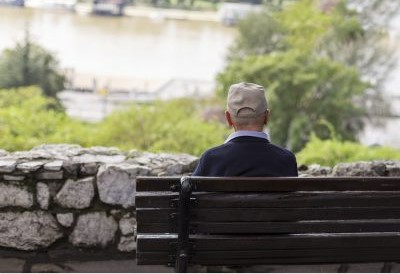Loneliness and social isolation in older adults are serious public health risks affecting a significant number of people in the United States and putting them at risk for dementia and other serious medical conditions.
A new reportexternal icon from the National Academies of Sciecnes, Engineering, and Medicine (NASEM) points out that more than one-third of adults aged 45 and older feel lonely, and nearly one-fourth of adults aged 65 and older are considered to be socially isolated.1 Older adults are at increased risk for loneliness and social isolation because they are more likely to face factors such as living alone, the loss of family or friends, chronic illness, and hearing loss.
Loneliness is the feeling being alone, regardless of the amount of social contact. Social isolation is a lack of social connections. Social isolation can lead to loneliness in some people, while others can feel lonely without being socially isolated.
Health Risks of Loneliness
Although it’s hard to measure social isolation and loneliness precisely, there is strong evidence that many adults aged 50 and older are socially isolated or lonely in ways that put their health at risk. Recent studies found that:
- Social isolation significantly increased a person’s risk of premature death from all causes, a risk that may rival those of smoking, obesity, and physical inactivity.1
- Social isolation was associated with about a 50% percent increased risk of dementia.1
- Poor social relationships (characterized by social isolation or loneliness) was associated with a 29% increased risk of heart disease and a 32% increased risk of stroke.1
- Loneliness was associated with higher rates of depression, anxiety, and suicide.
- Loneliness among heart failure patients was associated with a nearly 4 times increased risk of death, 68% increased risk of hospitalization, and 57% increased risk of emergency department visits.1
Immigrant, LGBT People Are at Higher Risk
The report highlights research on loneliness among vulnerable older adults, including immigrants; gay, lesbian, bisexual, and transgender (LGBT) populations; minorities; and victims of elder abuse. It also points out that the literature base for these populations is sparse and more research is needed to determine risks, impacts, and appropriate actions needed.
Current evidence suggests that immigrant and LGBT populations experience loneliness more often than other groups. Latino immigrants, for example, “have fewer social ties and lower levels of social integration than US-born Latinos.” First-generation immigrants experience stressors that can increase their social isolation, such as language barriers, differences in community, family dynamics, and new relationships that lack depth or history, the report states. Similarly, gay, lesbian, and bisexual populations tend to have more loneliness than their heterosexual peers because of stigma, discrimination, and barriers to care.
What Can You Do If You Are Experiencing Loneliness?
Your doctor can assess your risk for loneliness and social isolation and get you connected to community resources for help, if needed. The following national organizations also offer helpful resources:
Area Agencies on Agingexternal icon (AAA) — A network of over 620 organizations across America that provides information and assistance with programs including nutrition and meal programs (counseling and home-delivered or group meals), caregiver support, and more. The website can help you find your local AAA, which may provide classes in Tai Chi and diabetes self-management.
Eldercare Locatorexternal icon — A free national service that helps find local resources for seniors such as financial support, caregiving services, and transportation. It includes a brochure that shows how volunteering can help keep you socially connected.
National Council on Agingexternal icon — Works with nonprofit organizations, governments, and businesses to provide community programs and services. This is the place to find what senior programs are available to assist with healthy aging and financial security, including the Aging Mastery Program® that is shown to increase social connectedness and healthy eating habits.
AARPexternal icon — Provides helpful information to seniors to help improve quality of life and provides access to Community Connection Tools.
Health Care System Interventions Are Key
People generally are social by nature, and high-quality social relationships can help them live longer, healthier lives. Health care systems are an important, yet underused, partner in identifying loneliness and preventing medical conditions associated with loneliness.
Nearly all adults aged 50 or older interact with the health care system in some way. For those without social connections, a doctor’s appointment or visit from a home health nurse may be one of the few face-to-face encounters they have. This represents a unique opportunity for clinicians to identify people at risk for loneliness or social isolation.
NASEM recommends that clinicians periodically assess patients who may be at risk and connect them to community resources for help. In clinical settings, NASEM recommends using the Berkman-Syme Social Network Index (for measuring social isolation) and the three-item UCLA Loneliness Scale (for measuring loneliness).
But patients must make their own decisions. Some people may like being alone. It is also important to note that social isolation and loneliness are two distinct aspects of social relationships, and they are not significantly linked. Both can put health at risk, however.
Reference
1 National Academies of Sciences, Engineering, and Medicine. 2020. Social Isolation and Loneliness in Older Adults: Opportunities for the Health Care System. Washington, DC: The National Academies Press. https://doi.org/10.17226/25663external icon.








